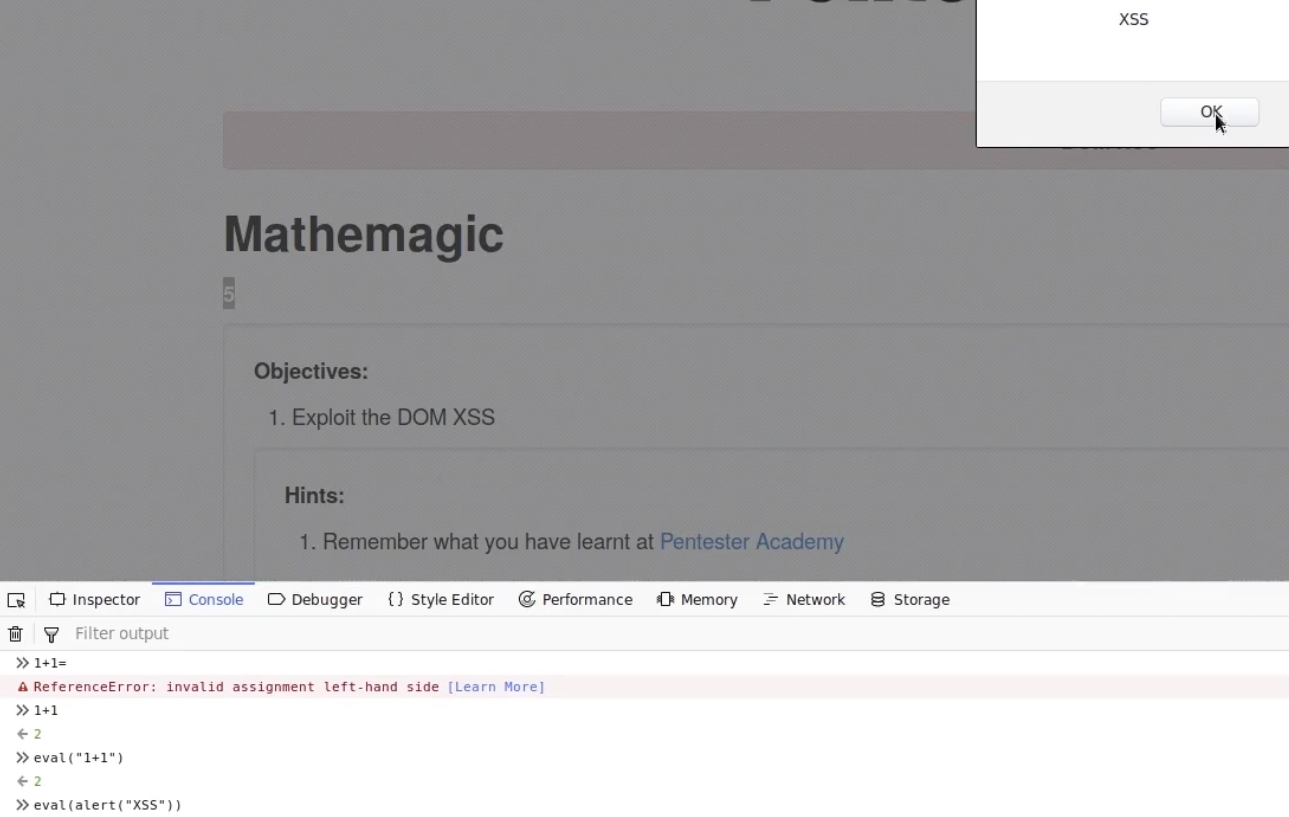4.2.4 DOM-Based XSS
DOM-Based XSS
DOM-based XSS vulnerabilities usually arise when JavaScript takes data from an attacker-controllable source, such as the URL, and passes it to a sink that supports dynamic code execution, such as eval() or innerHTML. This enables attackers to execute malicious JavaScript, which typically allows them to hijack other users' accounts.
To deliver a DOM-based XSS attack, you need to place data into a source so that it is propagated to a sink and causes execution of arbitrary JavaScript.
The most common source for DOM XSS is the URL, which is typically accessed with the window.location object. An attacker can construct a link to send a victim to a vulnerable page with a payload in the query string and fragment portions of the URL. In certain circumstances, such as when targeting a 404 page or a website running PHP, the payload can also be placed in the path.
Executing JavaScript from a string is an enormous security risk. It is far too easy for a bad actor to run arbitrary code when you use eval(). See Never use direct eval()!, below.
Lab
This piece of code is vulnerable, because there's not input sanitisation

Starting of this URL: https://pentesteracademylab.appspot.com/lab/webapp/jfp/dom?statement= we can add code that will be executed using eval JS function with the document.getElementByID that will change the DOM HTML attribute value


